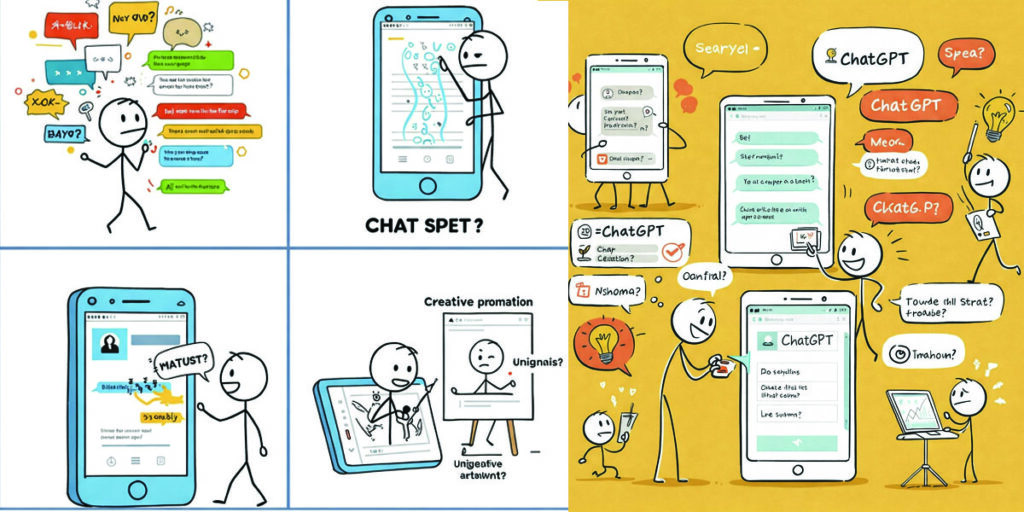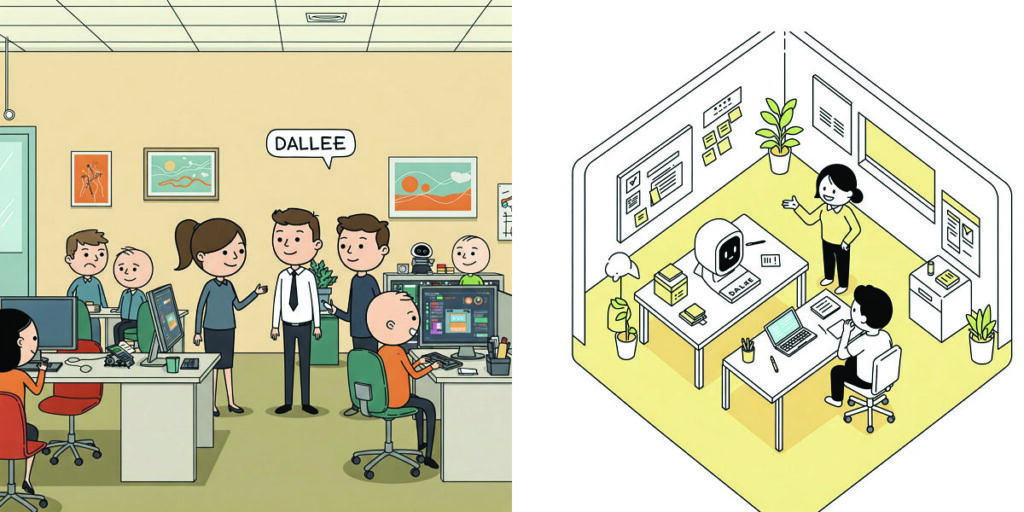Popular AI photo enhancer and avatar generator app
In the rapidly evolving landscape of digital creativity and artificial intelligence, Lensa AI emerged as a prominent force, particularly capturing global attention with its “Magic Avatars” feature. More than just a simple photo editor, Lensa AI, developed by Prisma Labs, represents a fascinating case study in the convergence of AI technology, consumer trends, and rapid market penetration. This article explores the journey of Lensa AI, from its origins as a photo editing tool to its viral sensation status as an avatar generator, examining its historical development, its significant economic footprint, and the underlying technological and social networking dynamics that propelled its success.
The Genesis: From Prisma’s Artistic Filters to Lensa’s Selfie Enhancement
To understand Lensa AI, one must first look at its parent company, Prisma Labs. Founded in 2016, Prisma Labs initially gained significant traction with its namesake app, Prisma. The Prisma app leveraged convolutional neural networks to transform ordinary photos into artistic masterpieces, mimicking the styles of famous painters. This early success demonstrated the potential of applying AI to mobile photo editing and laid the groundwork for Prisma Labs’ subsequent ventures. The company, with roots tracing back to Moscow, Russia, and later establishing a presence in California, quickly positioned itself at the forefront of mobile AI-powered image manipulation.
Building on the expertise and technological foundation developed with Prisma, Prisma Labs launched Lensa AI in 2018. Initially, Lensa was conceived as a more focused selfie and portrait editing application. Its core features revolved around enhancing natural beauty, offering tools for skin smoothing, eye correction, background manipulation, and applying various filters and effects. The app aimed to provide users with professional-quality retouching capabilities that were easy to use on a smartphone. This initial version of Lensa steadily grew in popularity, carving out a niche in the crowded photo editing market by focusing specifically on portrait enhancement.
For several years, Lensa AI remained a popular, albeit not globally viral, photo editing tool. It offered a subscription model, providing users with unlimited access to its range of editing features. This stable period allowed Prisma Labs to refine Lensa’s core technology and user interface, setting the stage for a future breakthrough.
The pivotal moment in Lensa AI’s history, the one that catapulted it into mainstream consciousness and led to a massive surge in downloads and revenue, was the introduction of the “Magic Avatars” feature. Launched in late November 2022, this feature allowed users to upload 10-20 photos of themselves and, for a fee, receive dozens or even hundreds of unique, AI-generated portraits in various artistic styles, ranging from fantasy and sci-fi to anime and abstract art.
The timing of the “Magic Avatars” launch was serendipitous. It coincided with a growing public fascination with generative AI, particularly image generation models like Stable Diffusion. Lensa AI effectively democratized access to this cutting-edge technology, offering a user-friendly interface to create personalized AI art. The novelty and visual appeal of the avatars made them instantly shareable on social media platforms, creating a powerful viral loop. Users eagerly shared their AI-generated portraits on Instagram, Twitter, TikTok, and other networks, sparking curiosity and driving millions of new downloads.
This period marked a dramatic shift in Lensa AI’s trajectory, transforming it from a useful photo editing app into a cultural phenomenon. The historical development shows a clear progression: from foundational AI art filters with Prisma, to specialized portrait editing with the initial Lensa, and finally to the explosive growth driven by accessible generative AI avatars.
The Economic Landscape: Monetization, Market Impact, and the Avatar Boom
Lensa AI’s economic model is a hybrid, primarily relying on subscriptions for its core photo editing features and one-time purchases for the “Magic Avatars” packs. The subscription provides ongoing access to the full suite of editing tools, catering to users who regularly enhance their photos. The “Magic Avatars” feature, however, introduced a high-impact, transactional revenue stream. Users paid a fee for each pack of avatars generated, incentivizing repeat purchases for those who wanted to see themselves depicted in different styles or themes.
The launch of “Magic Avatars” had an immediate and dramatic impact on Lensa AI’s revenue. According to various reports, the app generated millions of dollars in revenue within days of the feature’s release, significantly exceeding its previous earnings. In December 2022 alone, Lensa AI’s monthly revenue skyrocketed, reaching unprecedented levels. While revenue figures saw a decline after the initial viral peak in early 2023, they remained significantly higher than pre-avatar levels, demonstrating the lasting economic impact of the feature.
The success of Lensa AI and its “Magic Avatars” also had a notable effect on the broader market for photo editing and creative applications. It highlighted the strong consumer demand for AI-powered creative tools, particularly those that offer personalized and easily shareable results. This spurred other companies to develop or enhance their own AI avatar and image generation features, intensifying competition in the space. While direct market share figures for Lensa AI within the overall photo editing market can be difficult to pinpoint precisely, its impact was undeniable, capturing a significant portion of user attention and spending during its peak.
The economic implications extend beyond direct revenue. The viral sharing of Lensa avatars on social media acted as free, highly effective marketing. The unique and diverse nature of the generated avatars encouraged users to engage with the app and share their results, creating a powerful network effect that fueled its growth without extensive traditional advertising spend. This organic virality is a key component of its economic success story.
However, the economic model also faced scrutiny. The pricing of the “Magic Avatars” packs and the subscription model were subjects of discussion among users. Furthermore, the sustainability of a business model heavily reliant on a viral feature was a question that arose once the initial hype subsided. While Lensa AI continues to generate revenue, maintaining the peak levels seen in late 2022 and early 2023 presents a challenge.
The competitive landscape in the AI-powered creative app market is constantly evolving. Lensa AI competes with a range of applications, from established photo editors like Adobe Photoshop Express and VSCO to other emerging AI-focused creative tools and avatar generators. Companies like Metahero, ACRZ, and The Oasis have also been mentioned as competitors, indicating the growing interest in digital identity and avatar creation. The key to long-term economic viability for Lensa AI lies in its ability to continue innovating, offering new features that resonate with users and maintain engagement beyond the initial novelty of avatar generation.
Technology and Networking: The AI Engine and Social Virality
The technological backbone of Lensa AI, particularly for its “Magic Avatars” feature, relies heavily on advanced artificial intelligence models, specifically diffusion models. These models are a type of generative AI that can create realistic and diverse images from noise, guided by text prompts or, in Lensa’s case, by learning the features from uploaded user photos.
Lensa AI utilizes an open-source neural network model, notably Stable Diffusion, as a core component for its avatar generation. The process involves training a personalized version of the model on the 10-20 images provided by the user. This fine-tuning allows the AI to understand the user’s unique facial structure, features, and likeness. Once trained, the model can then generate new images of the user in various styles and scenarios, guided by internal prompts and artistic parameters. The computational power required for this training and generation process is significant, reportedly involving billions of mathematical operations for each set of photos.
The technical architecture involves handling user data securely, processing images through complex AI models, and rendering the final avatars. Prisma Labs has stated that user photos uploaded for avatar generation are deleted from their servers once the process is complete, along with the individually trained model, addressing some privacy concerns related to data retention. Their servers are located in the United States, and the company asserts compliance with data protection regulations like GDPR and CCPA.
Beyond the internal technology, networking plays a crucial role in Lensa AI’s success, albeit not in the traditional sense of a social network within the app. Lensa AI’s networking power stems from the output it generates and how that output is shared across existing social media networks. The “Magic Avatars” were specifically designed to be visually striking and easily shareable, making them ideal content for platforms like Instagram, Twitter, Facebook, and TikTok.
The viral spread of these avatars created a powerful network effect. Each user who shared their avatars effectively became an ambassador for the app, exposing their network of followers to Lensa AI’s capabilities. This organic, user-driven marketing was a major factor in the app’s rapid ascent. The diverse styles of the avatars encouraged conversations and engagement, further amplifying their reach.
The technology also facilitates a form of creative networking, allowing users to explore different digital identities and share them with their online communities. It taps into the human desire for self-expression and the ability to present oneself in novel and imaginative ways in the digital realm.
However, the reliance on external social networks for virality also means that Lensa AI’s popularity can be influenced by trends and algorithm changes on those platforms. The initial peak in downloads and usage was heavily tied to the novelty and shareability of the avatars. Maintaining consistent user engagement requires either the introduction of new, equally compelling features or building a more sustained value proposition within the app itself.
Furthermore, the technology and its output raised important discussions around AI ethics and potential biases. As the underlying models are trained on vast datasets scraped from the internet, they can inherit and sometimes amplify societal biases present in that data. Users reported instances of the avatars reflecting racial or gender stereotypes, and in some concerning cases, sexualizing images, even of minors. While Prisma Labs has stated they have measures in place to mitigate such issues, these incidents highlight the challenges and responsibilities associated with deploying powerful generative AI models to a mass audience. The debate surrounding the originality of AI-generated art and its potential impact on human artists also became a significant point of discussion, touching upon the ethical implications of training models on existing artwork without explicit consent.
Challenges, Criticisms, and the Future
While Lensa AI enjoyed immense success, it was not without its challenges and criticisms. As mentioned, ethical concerns surrounding AI bias, particularly in representations of race and gender, and the potential for generating inappropriate or sexualized content, were significant. The company had to address these issues publicly and implement measures to improve content moderation and mitigate bias in the AI models.
Another area of contention was the ownership and usage rights of the generated avatars. Lensa’s terms of service initially sparked debate regarding Prisma Labs’ rights to use the user-generated avatars, leading to calls for greater clarity and user control over their AI-created likenesses.
The reliance on the “Magic Avatars” for a significant portion of its revenue also presented a challenge for long-term sustainability. The initial viral surge was fueled by novelty; maintaining user interest requires continuous innovation and the development of new features that offer lasting value beyond avatar generation.
Looking ahead, the future of Lensa AI, and similar AI-powered creative apps, likely involves continued refinement of the AI models, exploration of new generative capabilities (perhaps beyond static images), and the integration of more interactive or social features within the app. As generative AI technology advances, the potential for creating increasingly realistic, customized, and diverse digital content will only grow. Lensa AI’s history demonstrates the power of combining cutting-edge AI with a user-friendly interface and a strong understanding of social media dynamics. Its economic trajectory highlights the potential, and the challenges, of monetizing viral AI features. The networking aspect, driven primarily by the shareability of its output, underscores the importance of designing AI tools with social interaction and dissemination in mind. As the AI landscape continues to evolve, Lensa AI’s journey serves as a valuable case study in the opportunities and complexities of bringing powerful artificial intelligence directly into the hands of consumers.
The development and widespread adoption of Lensa AI underscore a broader trend in the digital economy: the increasing democratization of advanced creative tools through artificial intelligence. Historically, creating high-quality digital art or professional-looking portraits required specialized skills and expensive software. Lensa AI, by leveraging AI models, significantly lowered the barrier to entry, allowing anyone with a smartphone to generate sophisticated digital imagery. This democratization has economic consequences, potentially expanding the market for digital creativity while also raising questions about the value of traditional artistic skills and the future of creative professions.
The “Magic Avatars” phenomenon also provided a glimpse into the potential of personalized generative AI. Users weren’t just applying a generic filter; they were creating unique representations of themselves. This personalized aspect was a key driver of engagement and sharing. The economic value here lies not just in the transaction for the avatar pack but in the creation of unique digital assets that users feel a personal connection to and are eager to share as part of their online identity.
Furthermore, Lensa AI’s experience with privacy concerns and bias in AI outputs is a critical learning point for the entire industry. As AI becomes more integrated into consumer applications, addressing these ethical considerations upfront and transparently will be crucial for building trust and ensuring responsible technology development. The public discourse around Lensa AI helped to raise awareness about the potential pitfalls of unbridled AI deployment and the importance of considering the societal impact of these technologies.
In conclusion, Lensa AI’s story is a compelling narrative of technological innovation, rapid market capture, and the complex interplay between AI, consumer behavior, and social media. From its origins as a refined photo editor to its viral success as an avatar generator, Lensa AI demonstrated the immense potential of making generative AI accessible and personalized. Its economic impact, characterized by a surge in revenue driven by a viral feature, highlights both the opportunities and the challenges of monetizing AI-powered creativity. The networking aspect, while not internal to the app, was fundamental to its growth, showcasing the power of shareable AI outputs on existing social platforms. As the field of artificial intelligence continues to advance, the lessons learned from Lensa AI’s journey – encompassing its historical development, economic strategies, technological underpinnings, and the crucial need to address ethical considerations – will undoubtedly inform the next generation of AI-powered creative tools and their impact on the digital world.
The evolution of Lensa AI also reflects the changing nature of digital identity and self-expression. In an increasingly digital-first world, avatars and online representations hold significant importance. Lensa AI provided users with a novel way to curate and present their digital selves, offering a diverse range of artistic styles that allowed for experimentation with different personas and aesthetics. This taps into the broader economic trend of the creator economy, where individuals are increasingly using digital tools to create and share personalized content. The avatars generated by Lensa became assets that users could deploy across various online platforms, from profile pictures to social media posts, enhancing their digital presence.
The economic model of offering “Magic Avatars” as a one-time purchase alongside a subscription service also provides insights into consumer willingness to pay for specific, high-value AI-generated content. While the subscription caters to ongoing utility, the avatar packs capitalized on a moment of high demand and novelty, allowing the company to generate significant revenue in a short period. This suggests that consumers are open to transactional models for unique AI-powered creations, in addition to traditional subscription services for broader toolsets.
The rapid rise and subsequent plateauing of Lensa AI’s viral popularity also serves as a reminder of the ephemeral nature of trends driven by social media. While the underlying technology of generative AI has long-term potential, its manifestation in consumer applications can be subject to the fickle dynamics of online trends. Sustaining engagement requires not only powerful technology but also a deep understanding of user needs and evolving digital culture. Future developments for Lensa AI may need to focus on building a more enduring relationship with users, perhaps through community features, continuous introduction of novel and useful AI tools, or integration with other platforms.
In terms of networking beyond social sharing, the underlying infrastructure supporting Lensa AI’s AI models is a critical component. The processing power required for training and running diffusion models necessitates robust cloud computing infrastructure. Companies like Amazon Web Services (AWS), Google Cloud Platform, and Microsoft Azure provide the scalable computing resources needed for such AI applications. The efficiency and cost-effectiveness of this infrastructure directly impact the app’s operational costs and its ability to handle large volumes of user requests, especially during periods of high demand.
The development of Lensa AI also contributes to the broader ecosystem of AI development. The widespread use of the app provides valuable data and feedback that can be used to further refine AI models and algorithms. User interactions, preferences for certain avatar styles, and feedback on the quality of the generated images can all contribute to the iterative improvement of the underlying AI technology. This creates a feedback loop where consumer applications drive advancements in fundamental AI research and development.
The case of Lensa AI also highlights the increasing convergence of different technological fields. It brings together artificial intelligence, mobile application development, cloud computing, and digital art. The success of such applications relies on expertise across these diverse areas. The future of creative technology will likely see even deeper integration of these fields, leading to more powerful and intuitive tools for digital expression.
Despite the criticisms and challenges, Lensa AI’s impact on the digital landscape is undeniable. It brought sophisticated generative AI into the hands of millions, sparked widespread conversations about AI ethics and the future of creativity, and demonstrated a powerful model for leveraging viral social media sharing for rapid market penetration. Its history provides valuable lessons for developers, businesses, and consumers navigating the exciting and complex world of artificial intelligence. The economic success, while subject to the dynamics of viral trends, showcased the significant commercial potential of personalized AI-generated content. The technological foundation, built upon advanced diffusion models and scalable cloud infrastructure, illustrates the capabilities required to power such applications. Finally, the networking effects, primarily driven by user-led social media sharing, underscore the importance of designing AI products that are inherently shareable and resonate with online communities. Lensa AI’s journey is a significant chapter in the ongoing story of how artificial intelligence is transforming the way we create, share, and interact with digital content.




















